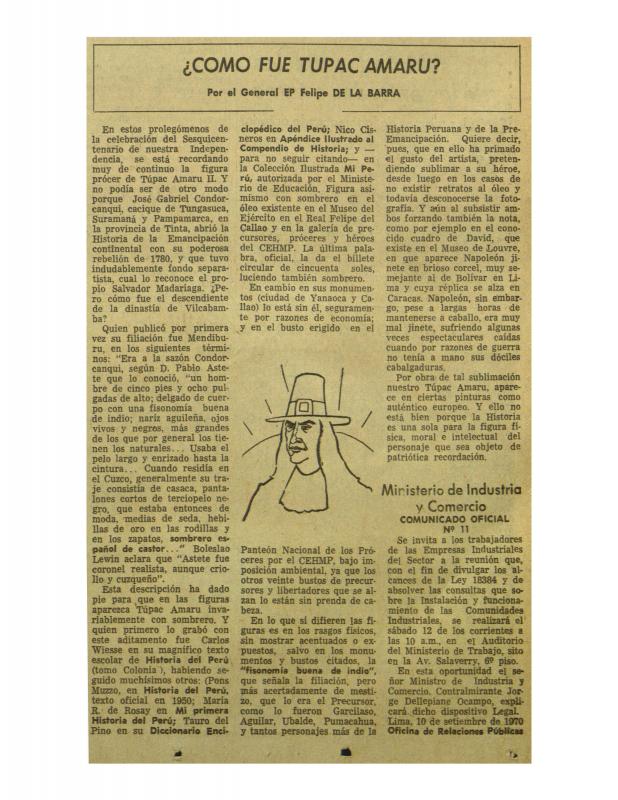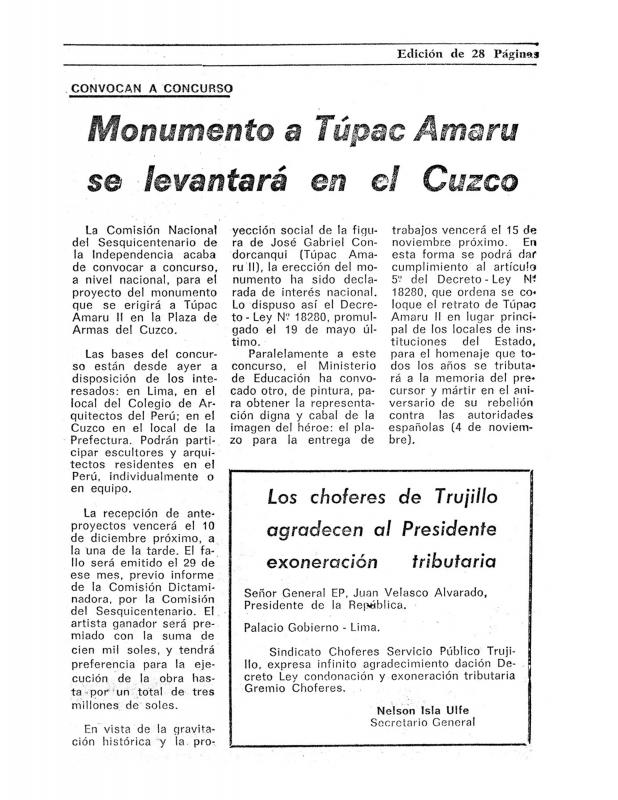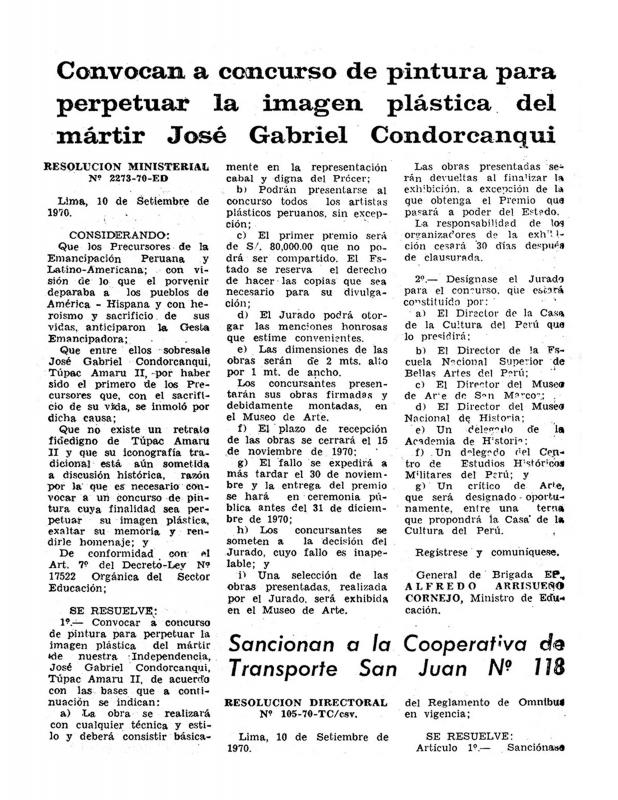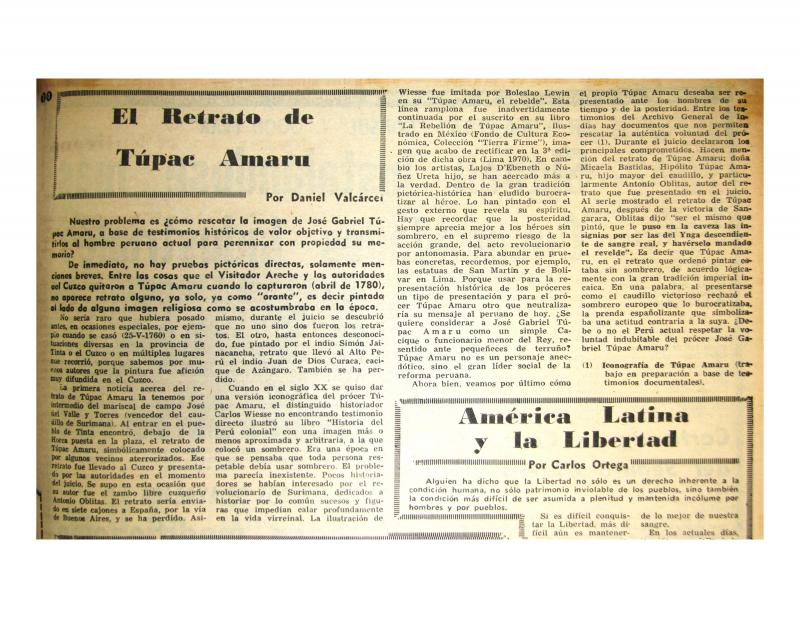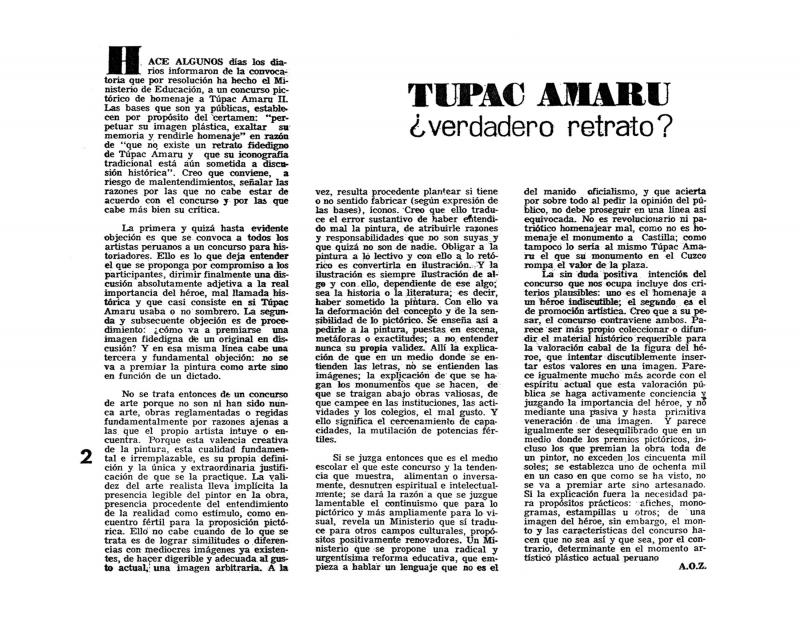The Peruvian writer Magda Portal (1900–89) was active in the artistic and political avant-garde as far back as the 1920s, and was a member of both the socialist circle of José Carlos Mariátegui and the APRA (Alianza Popular Revolucionaria Americana) during Victor Raúl Haya de la Torre’s first revolutionary–indigenist phase. In this article, Portal notes the enthusiasm with which many progressive intellectuals like her, welcomed the promise of social change advocated by the policies and the speeches of the military government led by General Juan Velasco Alvarado (1968–75). Their expectations seemed to be perfectly expressed by the resuscitation of the image of Túpac Amaru II, whose likeness, drawn by Jesús Ruiz Durand (b. 1949), first achieved fame as the icon of the agrarian reform, and then went on to become the symbol of the whole process of social change in Peru.
José Gabriel Condorcanqui, Túpac Amaru II (1738–81), was an Inca chieftain who, in 1780, led the rebellion of the Andean people against the Spanish Empire. After languishing in the relative obscurity of traditional Peruvian historiography, his image was appropriated by the self-styled Gobierno Revolucionario de las Fuerzas Armadas during its first phase (1968–75), a time when the government was creating pioneering social reforms and exploring the use of icons as symbolic expressions of the regime and its aims.
[As complementary reading about Túpac Amaru II, see the following articles in the ICAA digital archive: by General EP Felipe de la Barra “¿Cómo fue Túpac Amaru?” (doc. no. 865441); (unattributed) “Convocan a concurso: monumento a Túpac Amaru se levantará en el Cuzco” (doc. no. 1053438); (unattributed) “Convocan a concurso de pintura para perpetuar la imagen plástica del mártir José Gabriel Condorcanqui” (doc. no. 865422); by Alfredo Arrisueño Cornejo “Declaran desierto el Concurso de Pintura ‘Túpac Amaru II’” (doc. no. 865498); (unattributed) “En busca de la imagen arquetípica de Túpac Amaru” (doc. no. 865702); by Daniel Valcárcel “El retrato de Túpac Amaru” (doc. no. 1052165); and by A. O. Z. “Túpac Amaru: ¿verdadero retrato?” (doc. no. 865460)].

